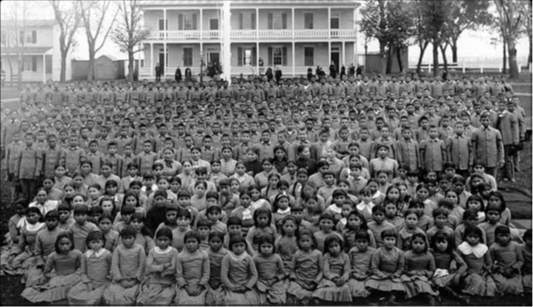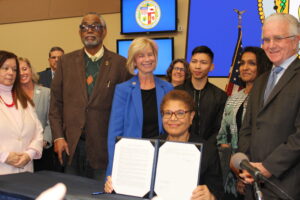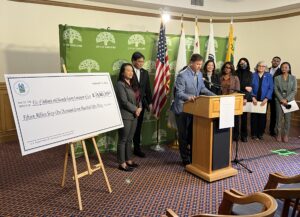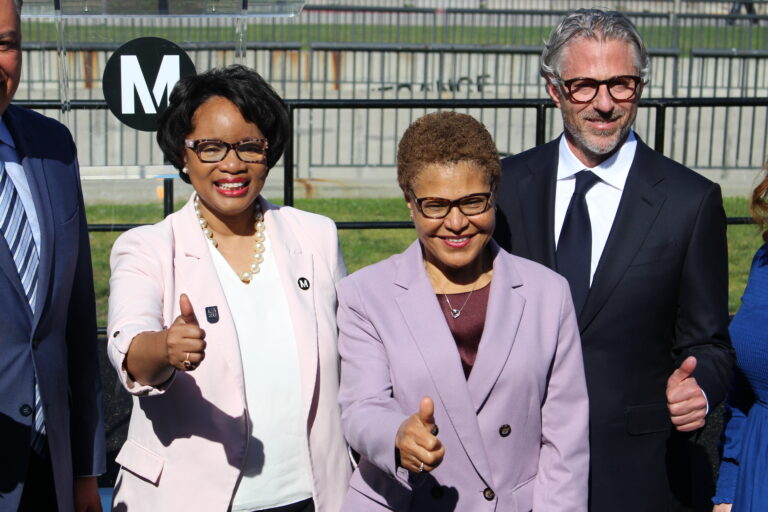The 54th Secretary of the Interior, Secretary Haaland Announces Federal Indian Boarding School Initiative
According to Haaland, for nearly 100 years, tens of thousands of Indigenous children were taken from their communities and forced into scores of boarding schools run by religious institutions and the U.S. government. Some studies suggest that by 1926, nearly 83 percent of Native American school-age children were in the system. Many children were doused with DDT upon arrival, and as their coerced re-education got underway, they endured physical abuse for speaking their tribal languages or practicing traditions that didn’t fit into what the government believed was the American ideal.
LINK: The government of the United States had an “Indian problem” similar to what it referred to as the “Negro Problem”. To address it, they enlisted Christian churches and decided to remove children from their communities and culture. They attempted to replace Tribal values, languages, and ways of knowing with dominant white Christian values, religion, culture, and language.

My great-grandfather was taken to Carlisle Indian School in Pennsylvania. Its founder coined the phrase “kill the Indian, and save the man,” which genuinely reflects the influences that framed these policies at the time.
My family’s story is not unlike that of many other Native American families in this country. We have a generation of lost or injured children who are now the lost or injured aunts, uncles, parents and grandparents of those who live today. I once spent time with my grandmother recording our history for a writing assignment in college. It was the first time I heard her speak candidly about how hard it was — about how a priest gathered the children from the village and put them on a train, and howshe missed her family. She spoke of the loneliness she endured. We wept together. It was an exercise in healing for her and a profound lesson for me about the resilience of our people, and even more about how important it is to reclaim what those schools tried to take from our people.
The announcement directed the Department, under the leadership of Assistant Secretary for Indian Affairs Bryan Newland, to prepare a report detailing available historical records relating to federal Indian boarding schools and to develop the first official list of sites. On May 11, 2022, Secretary Haaland and Assistant Secretary Newland released Volume 1 of the investigative report. This report lays the groundwork for the continued work of the Interior Department to address the intergenerational trauma created by historical federal Indian boarding school policies. It reflects an extensive and first-ever inventory of federally operated schools, including profiles and maps.
The investigation found that from 1819 to 1969, the federal Indian boarding school system consisted of 408 federal schools across 37 states or then territories, including 21 schools in Alaska and 7 schools in Hawaii. The investigation identified marked or unmarked burial sites at approximately 53 different schools across the school system. As the investigation continues, the Department expects the number of identified burial sites to increase.
The COVID-19 pandemic and its resulting closures of federal facilities reflect the need for further investigation. The report identifies next steps that will be taken in a second volume, aided by a new $7 million investment from Congress through fiscal year 2022.
As part of the Federal Indian Boarding School Initiative and in response to recommendations from the report, Secretary Haaland has launched “The Road to Healing.” This year-long commitment to travel across the country will allow American Indian, Alaska Native, and Native Hawaiian survivors of the federal Indian boarding school system the opportunity to share their stories, help connect communities with trauma-informed support, and facilitate collection of a permanent oral history.




























